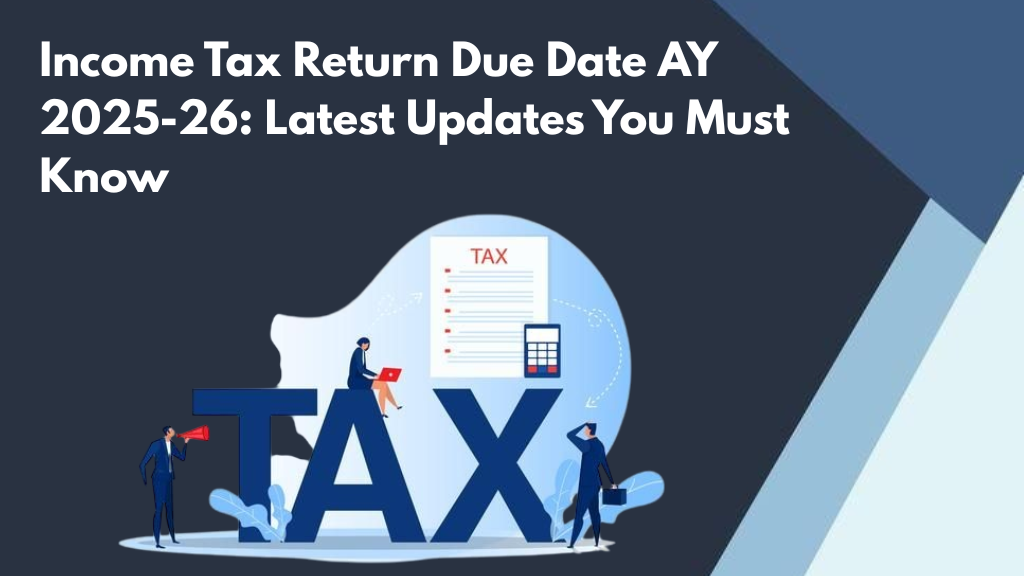Mutual Fund Returns
Mutual Fund Returns — What You Need to Know in 2025
- If you ask any investor what they want most from mutual funds, the answer is simple: good returns. But many people don’t really understand what mutual fund returns mean, how they work, or what affects them. Some expect unrealistic profits in a few months, only to feel disappointed when markets go down.
- In this guide, you’ll learn everything about mutual fund returns — how they are calculated, what is realistic in India, what affects them, and how to read return figures the smart way. By the end, you’ll have the confidence to plan your investments better and avoid common mistakes.
What Are Mutual Fund Returns?
Mutual fund returns are the profit or growth you earn on your investment. Simply put, they show how much your money has grown over a period of time. If you invest ₹1 lakh and it grows to ₹1.20 lakh in a year, you’ve earned a 20% return.
Returns are usually shown in two ways:
- Absolute Returns: Total gain over a period.
- Annualised Returns (CAGR): The average yearly growth rate if you stayed invested for more than a year.
- Absolute Returns: Total gain over a period.
Lorem ipsum dolor sit amet, consectetur adipiscing elit. Ut elit tellus, luctus nec ullamcorper mattis, pulvinar dapibus leo.
Business News
Types of Returns You’ll See
When you look up a mutual fund’s performance, you’ll see returns shown for different time frames. For example:
- 1-year returns
- 3-year returns
- 5-year returns
- Since inception
These help you judge if a fund has performed well over different market cycles.
Average Mutual Fund Returns in India
One of the most common questions is: “How much return can I expect from mutual funds in India?”
There’s no fixed answer, because returns depend on the market, the type of fund, the fund manager, and how long you stay invested.
But here’s a rough idea:
- Equity Mutual Funds: Historically, 10–15% annualised returns over the long term (5–10 years).
- Debt Mutual Funds: 5–8% annualised returns.
- Hybrid Funds: 8–12%, depending on equity exposure.
- Index Funds & ETFs: Close to the benchmark index, usually 10–12% long-term.
Of course, these are average figures. Some years can be great (20%+), and some years can be negative. That’s why time in the market matters.
- Equity Mutual Funds: Historically, 10–15% annualised returns over the long term (5–10 years).
Factors That Affect Mutual Fund Returns
Your mutual fund returns depend on many things:
1. Market Performance: If the stock market rises, equity fund returns usually rise too. If markets crash, returns can drop.
2. Fund Manager’s Strategy: In actively managed funds, a skilled fund manager can sometimes beat the market.
3. Expense Ratio: The cost of managing the fund. Higher expense ratios can eat into your returns over time.
4. Asset Allocation: The mix of equity, debt, or gold impacts risk and returns.
5. Your Investment Horizon: Staying invested for the long term helps average out ups and downs.
6. SIP vs. Lumpsum: SIPs help smooth returns by investing in good and bad times, while lumpsum investments can be riskier if you invest at a market peak.
How to Calculate Mutual Fund Returns
There are a few ways to check your returns:
1. Absolute Return Formula (for under 1 year):
Absolute Return=(CurrentNAV−InitialNAV)InitialNAV×100\text{Absolute Return} = \frac{(Current NAV – Initial NAV)}{Initial NAV} \times 100Absolute Return=InitialNAV(CurrentNAV−InitialNAV)×100
2. CAGR (Compound Annual Growth Rate):
This is for investments held longer than a year. It shows the average rate your money has grown every year.CAGR Formula:
CAGR=(FinalValueInitialValue)1/n−1CAGR = \left( \frac{Final Value}{Initial Value} \right)^{1/n} – 1CAGR=(InitialValueFinalValue)1/n−1
Example: If you invested ₹1 lakh, and it becomes ₹1.46 lakh in 4 years:
CAGR=(1,46,0001,00,000)1/4−1=10CAGR = \left( \frac{1,46,000}{1,00,000} \right)^{1/4} – 1 = 10% \text{ annualised}CAGR=(1,00,0001,46,000)1/4−1=10
3. XIRR: If you have irregular investments (like multiple SIPs or lumpsum top-ups), XIRR is the most accurate way. Most platforms calculate this automatically for you.
SIP Returns Calculation
SIP (Systematic Investment Plan) returns are a bit different because you invest small amounts at regular intervals.
When you do SIPs:
- You buy more units when prices are low.
- You buy fewer units when prices are high.
This averages your cost — called Rupee Cost Averaging.
SIP returns are calculated using XIRR, which accounts for multiple cash flows. Apps like Groww, Zerodha, or Coin show your SIP XIRR on your dashboard.
- You buy more units when prices are low.
Huge user growth in Q2 2025
Example — How SIP Returns Work
Let’s say you invest ₹5,000 every month in an equity fund for 5 years. If the average annual return is 12%, your investment could grow like this:
- Total invested: ₹3 lakh (₹5,000 x 60 months)
- Approx value after 5 years: ₹4.1 lakh (assuming 12% annual SIP return)
This is just an estimate. Real returns depend on the market.
- Total invested: ₹3 lakh (₹5,000 x 60 months)
Mutual Fund Returns vs FD Returns
Many people still wonder if they should stick with FDs instead of mutual funds.
- FDs (Fixed Deposits): Fixed returns (6–7% in 2025). No market risk but returns often fail to beat inflation.
- Mutual Funds: Not guaranteed, but can give higher inflation-beating returns in the long term.
So, if you want stability for short-term money, FDs are fine. For wealth creation over 5+ years, mutual funds can do better.
- FDs (Fixed Deposits): Fixed returns (6–7% in 2025). No market risk but returns often fail to beat inflation.
Myths About Mutual Fund Returns
Many new investors believe things that are not true. Let’s bust some myths.
❌ Myth 1: Mutual funds guarantee high returns.
✅ Truth: Returns depend on the market. They can be positive or negative.❌ Myth 2: A fund that performed well last year will always do well.
✅ Truth: Past returns don’t guarantee future performance.❌ Myth 3: You should stop SIPs when the market falls.
✅ Truth: That’s when you buy more units cheap — staying invested helps.
How to Improve Your Mutual Fund Returns
Smart investors don’t just pick the highest-return fund. They:
- Match funds to their goals.
- Diversify across fund types.
- Stay invested for the long term.
- Avoid panic selling during market dips.
- Review funds once a year.
- Match funds to their goals.
Latest Trends — Mutual Fund Returns in 2025
In 2025, Indian markets have seen big ups and downs, but long-term SIP investors are still getting healthy returns.
Trends:
- Passive Funds: More people are choosing index funds because they match the market and charge less.
- ESG Funds: Environmentally-friendly funds are seeing interest from Gen Z.
International Funds: Some investors diversify abroad for extra growth.
- Passive Funds: More people are choosing index funds because they match the market and charge less.
Final Tips for Investors
1. Always keep realistic expectations. Don’t hope for 40% every year.
2. Use SIPs to reduce market timing stress.
3. Don’t check NAVs daily — think long term.
4. Stick with your plan — compounding needs time.
Final Words
- Mutual fund returns can look exciting on paper. But they only reward you if you stay patient. Be clear about your goal, pick the right fund, and give it time to grow.
- As the saying goes: Time in the market is better than timing the market. Trust the process — and your returns will follow.
- All Posts
- Become Partner
- Broker Review
- Crypto
- IPO
- Mutual Fund
- Recent News
- Recent Updates
- Stock Market

Income Tax Return Due Date AY 2025-26: Latest Updates You Must Know The income tax return due date is one...

Urban Company IPO GMP Rises Urban Company IPO GMP The Urban Company IPO GMP has surged ahead of its public...

Urban Company IPO 2025 – A Profitable Startup Going Public Urban Company IPO 2025 The Urban Company IPO 2025 has...

IPO Raised ₹599 Crore Even Before Opening, Investors Rush In; GMP Will Blow Your Mind The Indian stock market is...

Meesho Files ₹4,250 Cr IPO: India’s Social Commerce Giant Eyes Stock Market Debut in October this Year Bengaluru-based ecommerce platform...

NSE’s Diwali IPO in Sight: Awaits SEBI’s NoC After ₹1,600 Cr Record Settlement Proposal From SEBI’s Final Clearance to Damani’s...
By Popular Top Share Brokers

Motilal Oswal
30 days brokerage free trading
Free – Personal Trading Advisor

AngelOne
Free Equity Delivery
Flat ₹20 Per Trade in F&O

Profit mart
Free Equity Delivery
Flat ₹20 Per Trade in F&O

ProStocks
Unlimited @ ₹899/month
Rs 0 Demat AMC

Upstox
FREE Account Opening
Flat ₹20 Per Trade

Paytm Money

Pay ₹0 brokerage for first 10 days
Flat ₹20 Per Trade

Fyers
Free Eq Delivery Trades
Flat ₹20 Per Trade in F&O




